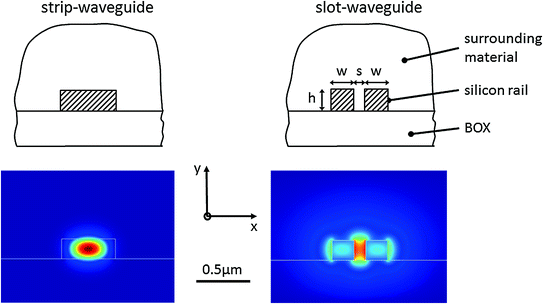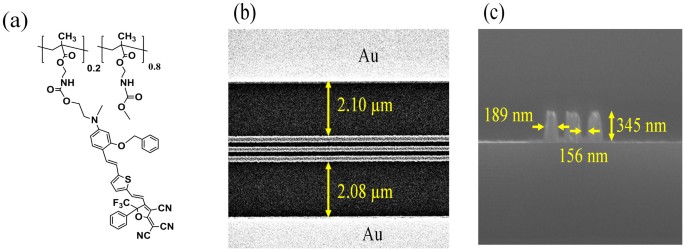
An ultracompact, broadband, and fully complementary metal-oxide-semiconductor (CMOS) compatible Si nanoplasmonic electro-absorption modulator is proposed based on the recently developed horizontal metal-insulator-silicon-insulator-metal nanoplasmonic slot waveguide. The Fermi-Dirac distribution. We also find that performance scales with modal waveguide confinement. Thus, we find highest energy-bandwidth-ratio modulator designs to be graphene, QD, QW, or 2D material-based plasmonic slot waveguides where the electric field is in-plane with the switching material dimension. We show that this improvement always. Top-down layout of a slot-waveguide based optical modulator. C: Three dimensional, isometric schematic of a slot-waveguide modulator, showing the slot waveguide, segmentation region and metal contacts. The device functions by maintaining the two arms of the slot waveguide at differing voltages, creating a strong electric field in the slot.

- Journal of the Optical Society of America B
- Vol. 29,
- Issue 6,
- pp. 1490-1496
- (2012)
- •https://doi.org/10.1364/JOSAB.29.001490


- Share
- Get CitationCopy Citation TextZhaolin Lu and Wangshi Zhao, 'Nanoscale electro-optic modulators based on graphene-slot waveguides,' J. Opt. Soc. Am. B 29, 1490-1496 (2012)Export Citation
Silicon Slot Waveguide
Abstract
Research on graphene has revealed its remarkable electro-optic properties, which promise to satisfy the needs of future electro-optic modulators. However, its ultrasmall thickness, compared with operating light wavelength, downplays its role in an optoelectronic device. The key to achieve efficient electro-optic modulation based on graphene is to enhance its interaction with light. To this end, some novel waveguides and platforms will be employed to enhance the interaction. Herein, we present our recent exploration of graphene electro-optic modulators based on graphene sandwiched in dielectric or plasmonic waveguides. With a suitable gate voltage, the dielectric constant of graphene can be tuned to be very small due to the effect of intraband electronic transition, resulting in “graphene-slot waveguides” and greatly enhanced absorption modes. Up to 3 dB modulation depth can be achieved within 800 nm long silicon waveguides, or 120 nm long plasmonic waveguides based on three-dimensional numerical simulations. They have the advantages of nanoscale footprints, small insertion loss, low power consumption, and potentially ultrahigh speed, as well as being CMOS-compatible.
©2012 Optical Society of America
Full Article PDF ArticleOSA Recommended ArticlesSlot Waveguide Modulator
Design of a graphene-based dual-slot hybrid plasmonic electro-absorption modulator with high-modulation efficiency and broad optical bandwidth for on-chip communicationZhongwei Wu and Yin Xu
Appl. Opt. 57(12) 3260-3267 (2018)
Abhijeet Phatak, Zhenzhou Cheng, Changyuan Qin, and Keisuke Goda
Opt. Lett. 41(11) 2501-2504 (2016)
Chao Xu, Yichang Jin, Longzhi Yang, Jianyi Yang, and Xiaoqing Jiang
Opt. Express 20(20) 22398-22405 (2012)
References
You do not have subscription access to this journal. Citation lists with outbound citation links are available to subscribers only. You may subscribe either as an OSA member, or as an authorized user of your institution.
Contact your librarian or system administrator
or
Login to access OSA Member Subscription
Cited By
You do not have subscription access to this journal. Cited by links are available to subscribers only. You may subscribe either as an OSA member, or as an authorized user of your institution.
Contact your librarian or system administrator
or
Login to access OSA Member Subscription
Figures (5)
You do not have subscription access to this journal. Figure files are available to subscribers only. You may subscribe either as an OSA member, or as an authorized user of your institution.
Contact your librarian or system administrator
or
Login to access OSA Member Subscription
Metrics
Slot Waveguide Modulator Circuit
You do not have subscription access to this journal. Article level metrics are available to subscribers only. You may subscribe either as an OSA member, or as an authorized user of your institution.
Contact your librarian or system administrator
or
Login to access OSA Member Subscription